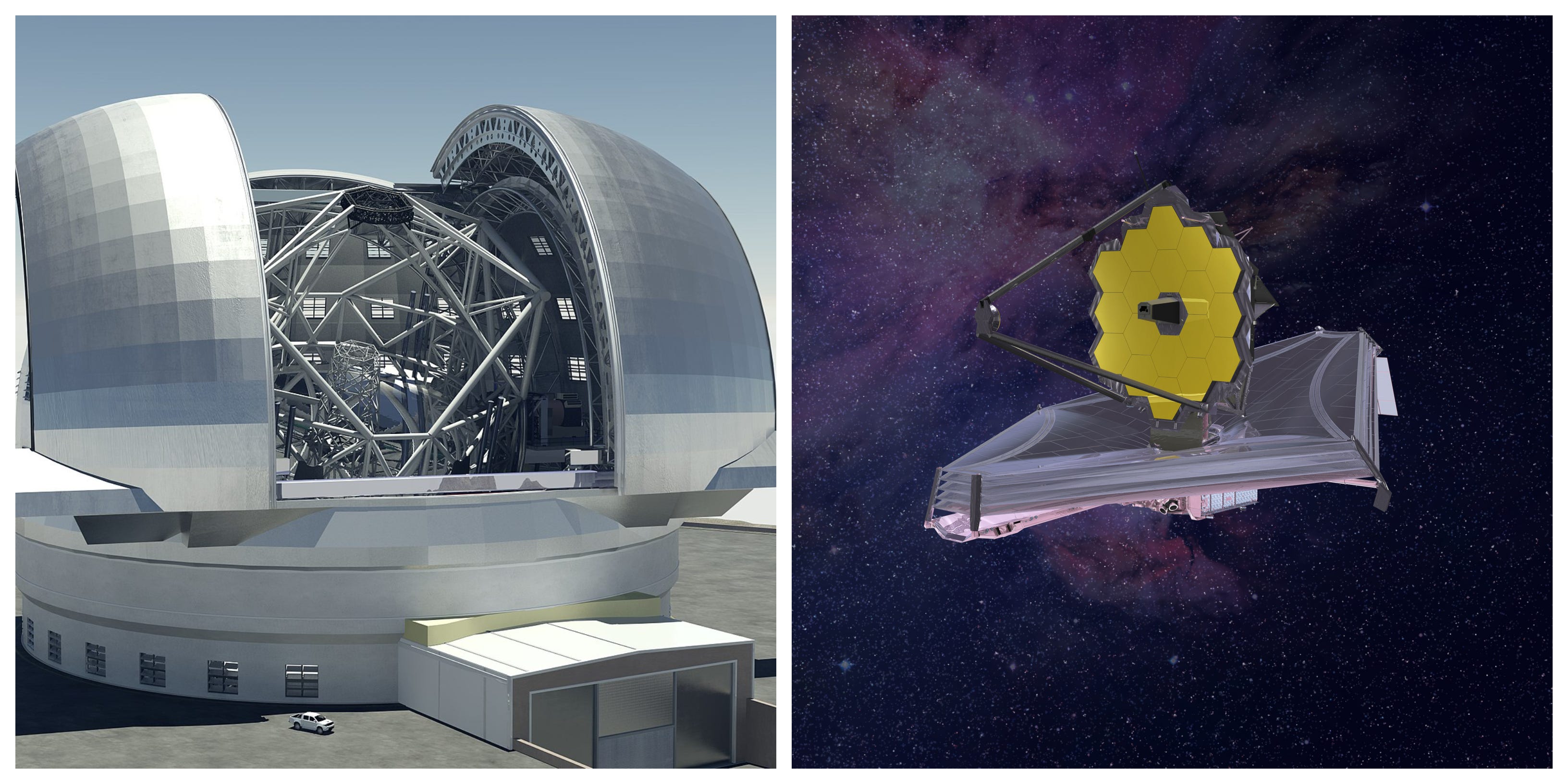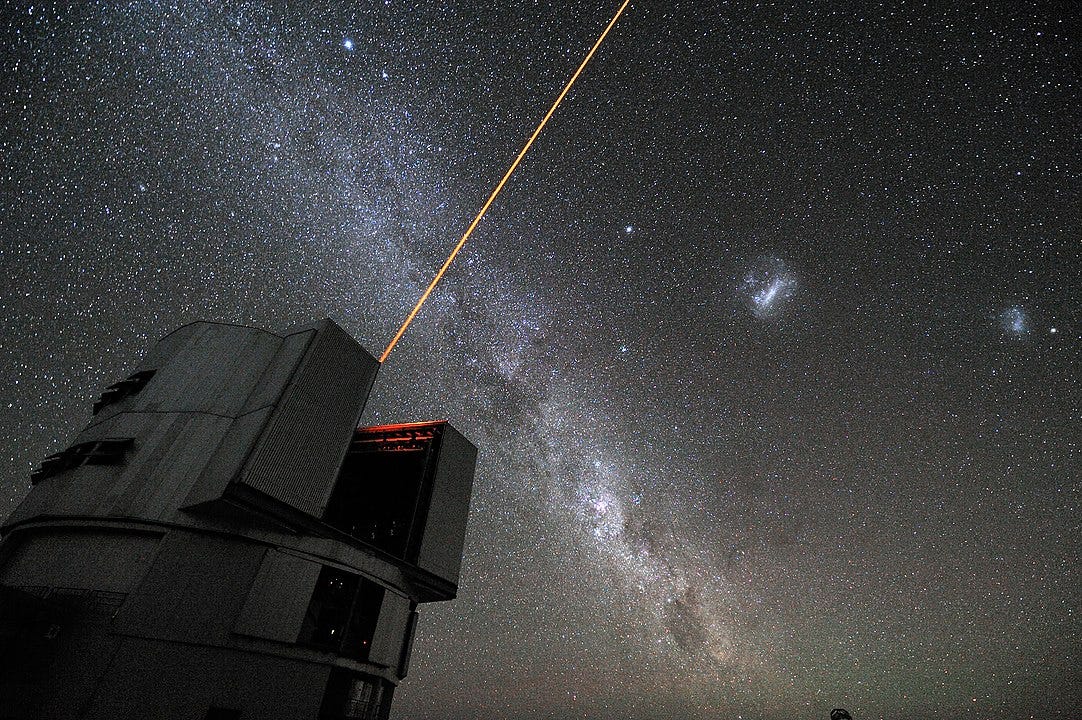For well over a dozen generations, every great observational discovery in astronomy was discovered using telescopes sitting firmly on the ground. The atmosphere above the heads of astronomers distorted images from space, but there was little other choice — until the advent of space travel. Amateur astronomers are familiar with disturbances caused by the atmosphere, while many people only see the effect as they gaze at the night sky, watching the stars twinkle. The spectrum of electromagnetic radiation encompasses a wide range of frequencies — not just the visible colors with which we are most familiar. Just like sound, light can be thought of (in many cases) as a wave — with different colors in the place of higher- or lower-toned notes. At higher frequencies than violet light is ultraviolet, than gamma rays, and X-rays. Lower than red on the spectrum sits infrared, microwave, and radio frequencies. The atmosphere of the Earth blocks most of the wavelengths of electromagnetic radiation, except for visible light, most radio waves, and the frequencies of infrared and ultraviolet light nearest the visible part of the spectrum. The first telescopes sent into space to examine the Cosmos examined small portions of the sky in ultraviolet frequencies that could not be seen from the ground. The Orbiting Astronomical Observatory (OAO), launched in 1968, was followed by the Orion 1 ultraviolet telescope aboard the Soviet Salyut 1 space station in 1971. On April 24, 1990, the Space Shuttle Discovery lifted the Hubble Space Telescope (HST) into orbit, making it the first major optical telescope in space. Today, a few dozen telescopes are examining the skies over a wide range of the electromagnetic spectrum. The atmosphere can ruin the ultra-detailed images needed by astronomers for research-grade observations, and the promise of space-based telescopes blossomed. However, as the era of space telescopes grew, technology for ground-based telescopes saw huge advances that made ground-based astronomy appealing once more. “Since suitable stars are not available everywhere in the night sky, astronomers can create artificial stars instead by shining a powerful laser beam into the Earth’s upper atmosphere. Thanks to these laser guide stars, almost the entire sky can now be observed with adaptive optics,” The European Southern Observatory (ESO) explains. When viewing targets in visible light, astronomers using adaptive optics can produce images that rival today’s current space-based telescopes. However, to see X-rays, long radio waves, and other frequencies, we must always place telescopes above the atmosphere. Although images using adaptive optics are much more clear and detailed than ever before, the atmosphere of the Earth will always continue to block most wavelengths of electromagnetic radiation. On the other hand, telescopes on the ground provide a few major advantages. The most obvious of these is that they are on the ground, making them easier to access. Although a large percentage of astronomical observations are carried out remotely by astronomers, some researchers still carry out their studies at the telescope, and ground-based observatories are much easier to visit. Repairs and upgrades to telescopes are also much easier to carry out on the ground than in space. Some space-based observatories, like the upcoming James Webb Space Telescope (JWST), orbit so far from Earth, that visits to repair or update the instruments are impossible. Another factor in the favor of keeping telescopes on the ground (when possible) is cost. For identical telescopes, it is much less expensive to build a telescope on the ground than to place it into orbit around the Earth or the Sun. The atmosphere of Earth will always block most wavelengths of the em spectrum. When observing at those frequencies, we will forever need to place instruments above the atmosphere. However, when studying targets in visible and short-wavelength radio waves, ground-based observatories are here to stay for a long time. This article was originally published on The Cosmic Companion by James Maynard, founder and publisher of The Cosmic Companion. He is a New England native turned desert rat in Tucson, where he lives with his lovely wife, Nicole, and Max the Cat. You can read this original piece here. Astronomy News with The Cosmic Companion is also available as a weekly podcast, carried on all major podcast providers. Tune in every Tuesday for updates on the latest astronomy news, and interviews with astronomers and other researchers working to uncover the nature of the Universe.


